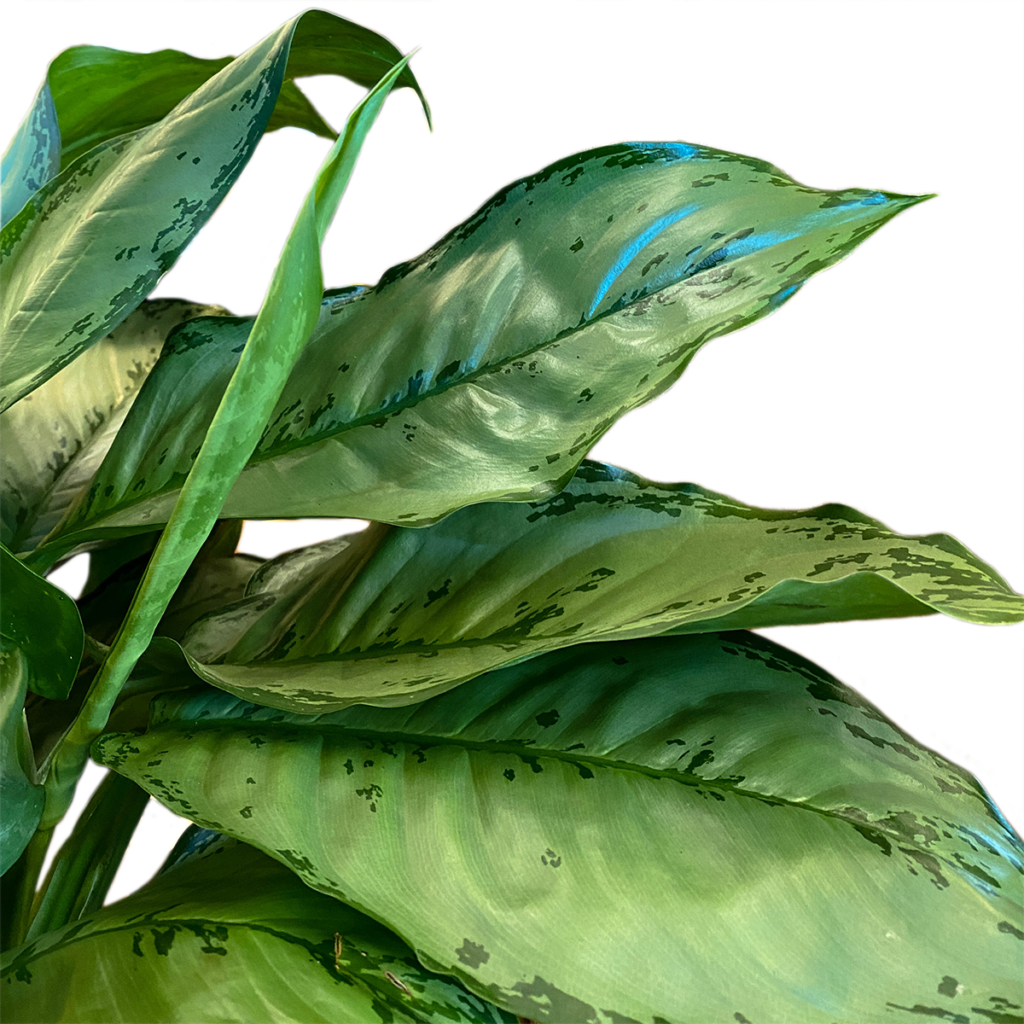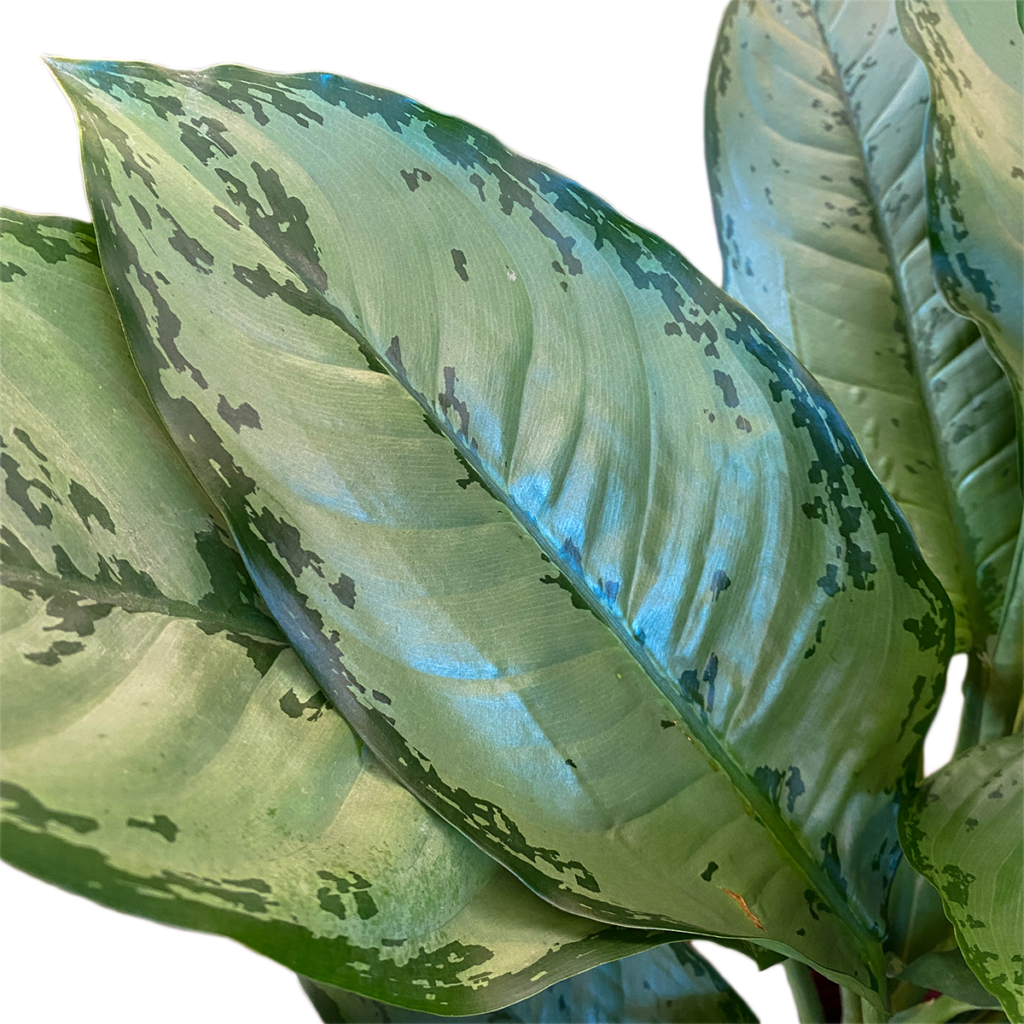The Aglaonema, commonly known as the Chinese Evergreen, is an incredibly popular houseplant. Native to the tropical forests of Asia, it comes in a large variety of cultivars with different colors, leaf shapes and variegation patterns. They’re a very hardy plant and are known for being able to survive droughts and low lighting conditions. This slow grower is a very hands off plant and will give you rewarding growth for years to come!
Watering
The aglaonema is very low demand when it comes to watering. While they don’t like to remain dry for very long, they are not known for being plants that need to be constantly wet either. The best way to water your Chinese Evergreen is to thoroughly water the soil and then allow it to dry out before watering again. Be careful when watering to ensure that the bottom of the pot isn’t harboring any hidden moisture, as this is common with taller planters and pots. Using a moisture meter can help, but if you don’t have access to one, sticking your finger a few inches into the soil can give you similar results. These plants are very prone to root rot so ensuring that the soil stays airy and not waterlogged is very important.
Lighting
Because of the wide variety of variegations and leaf colors, the lighting requirements for your aglaonema can vary pretty drastically. One good rule to keep in mind is the lighter the leaf color, the more light it will require. Darker greens will be far more tolerant of low light than the different colors they come in. In general, placing your Chinese Evergreen in a north facing window can ensure that your plant is getting a decent amount of sunlight everyday. If your plant has lighter leaves, an East or West facing window would be better suited to your plant’s individual needs. Take care to ensure that your plants are getting a lot of bright, direct sunlight to avoid sunburn.
Humidity
Because of these plants native tropical climates, it’s no surprise that they prefer higher humidity requirements. While they will tolerate normal room humidity levels, they would thrive in a higher humidity setting. This can be achieved by placing your aglaonema by a humidifier or on a pebble tray. If you go the route of having a pebble tray, ensure that your plant is not sitting in any water, as this will lead to root rot.
Fertilizing
To give your aglaonema a little boost in it’s growth, fertilize every 1 to 2 months during active growth (typically spring through summer) with a water soluble fertilizer. You could also opt for slow release fertilizer that only needs to be given every 3-4 months and will routinely fertilize your plants whenever you water!

 Aglaonema Care – The Chinese Evergreen
Aglaonema Care – The Chinese Evergreen
